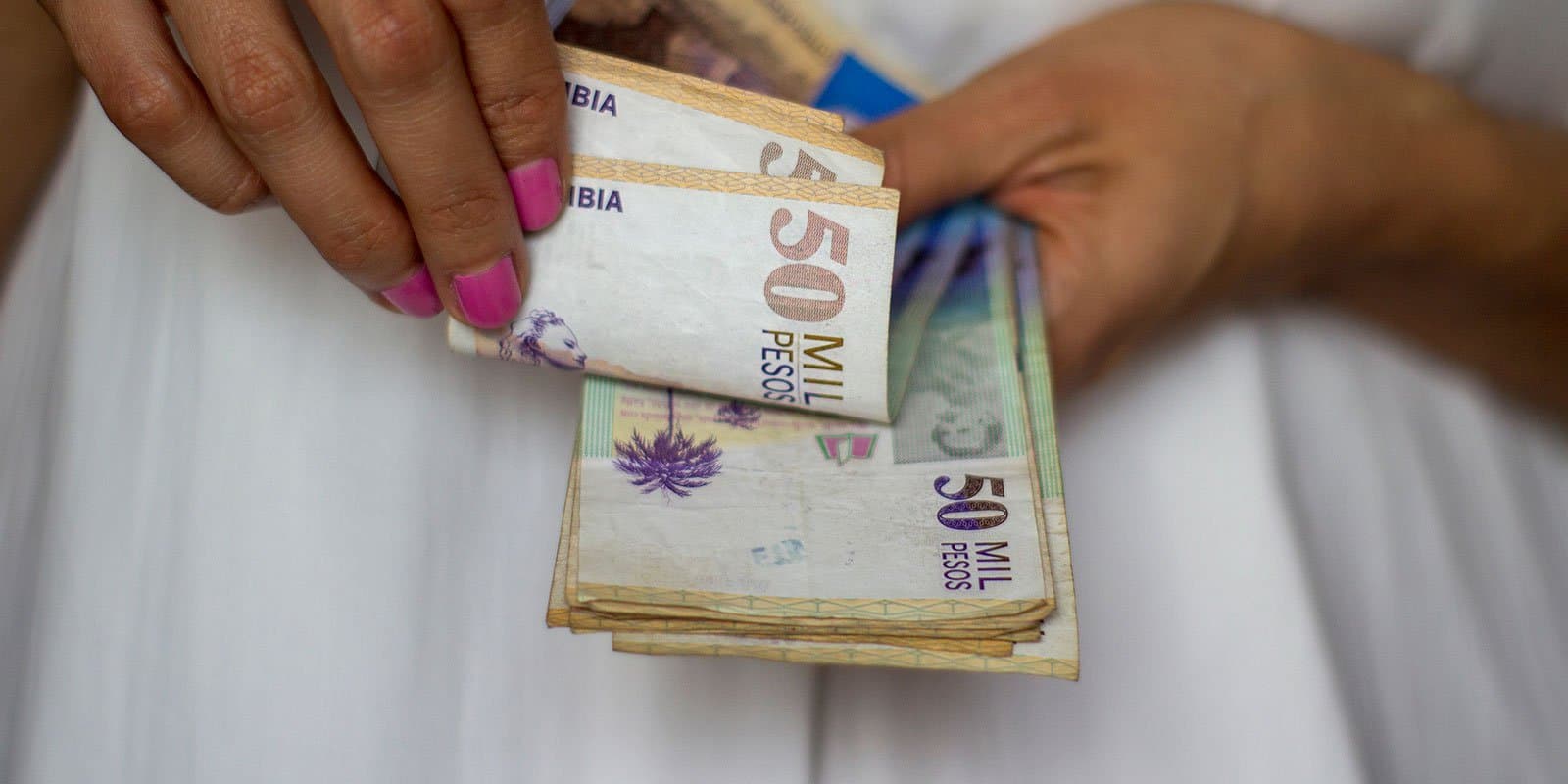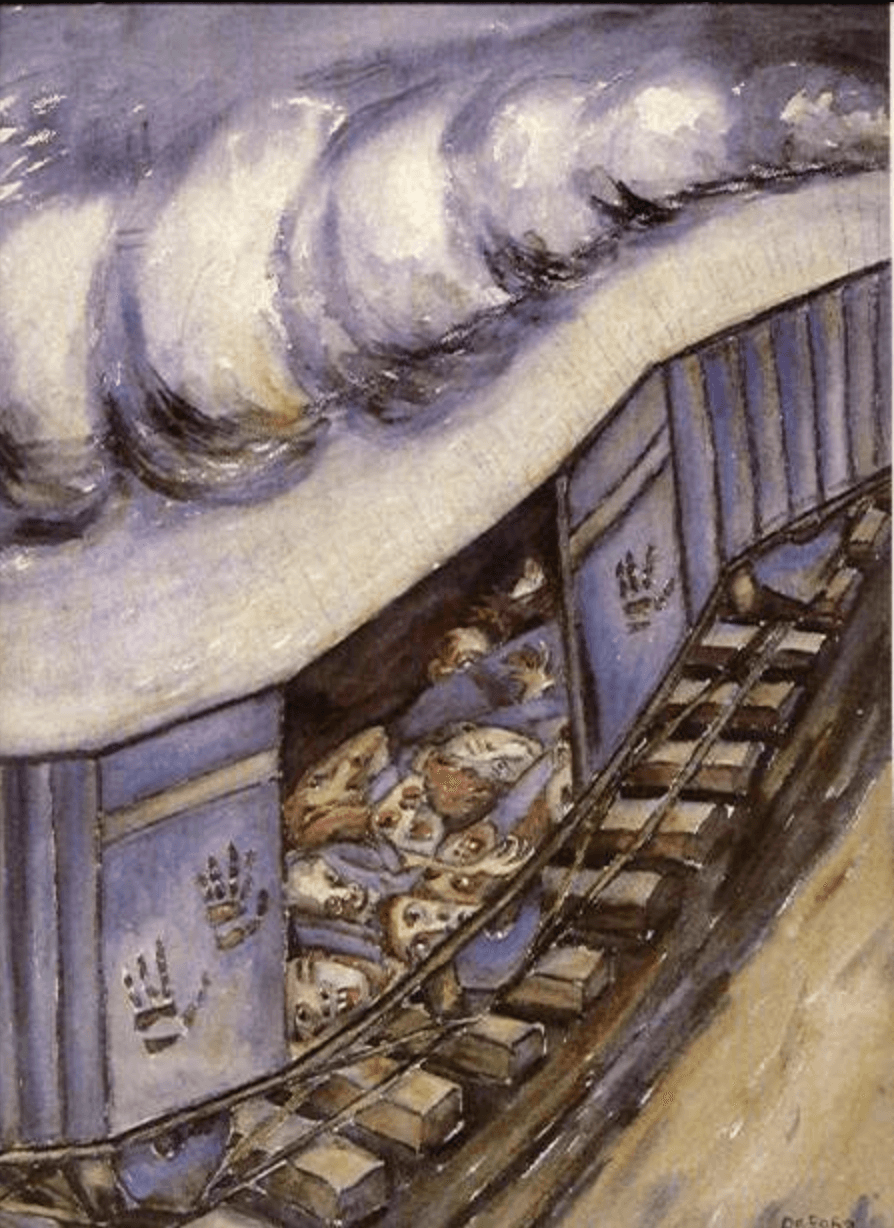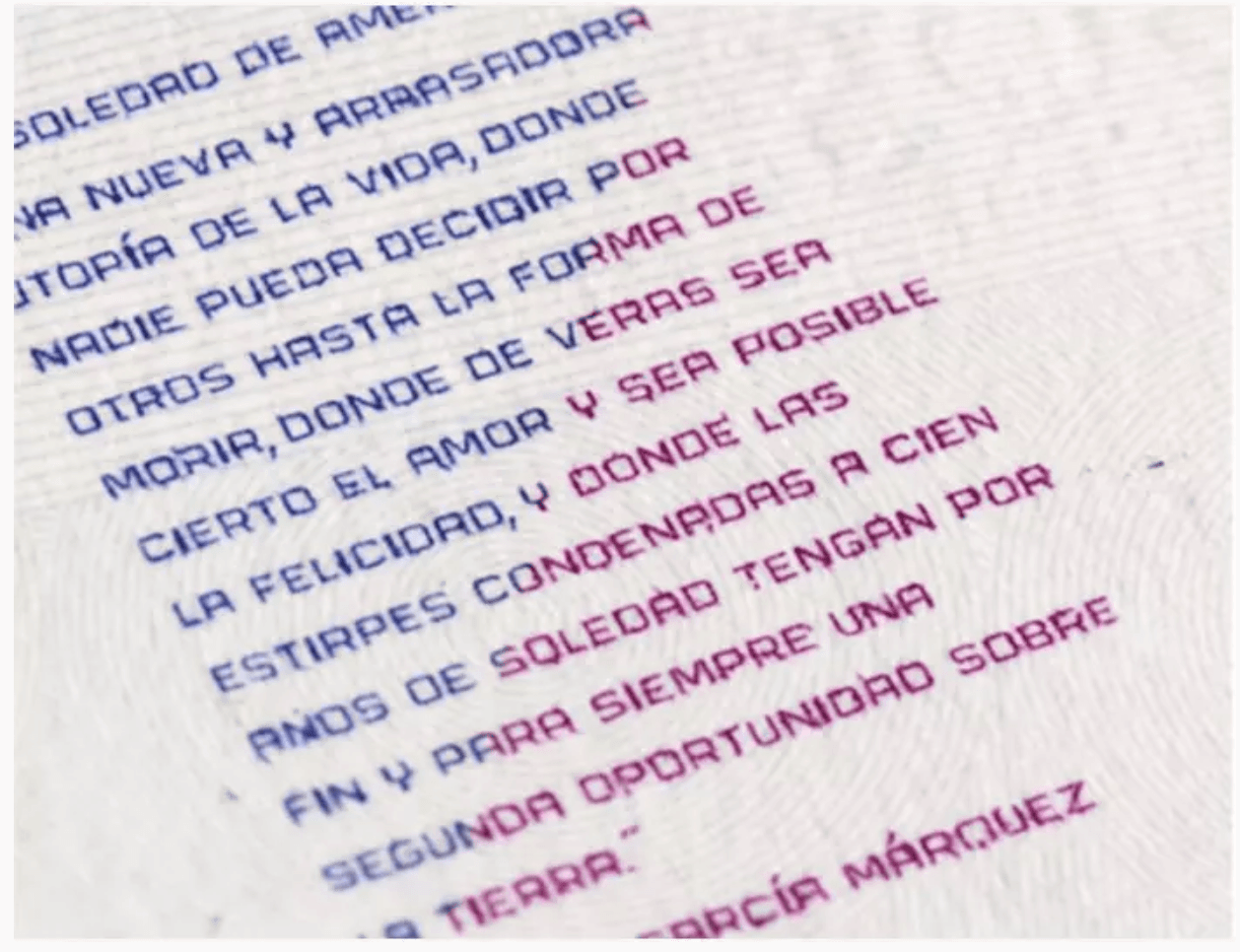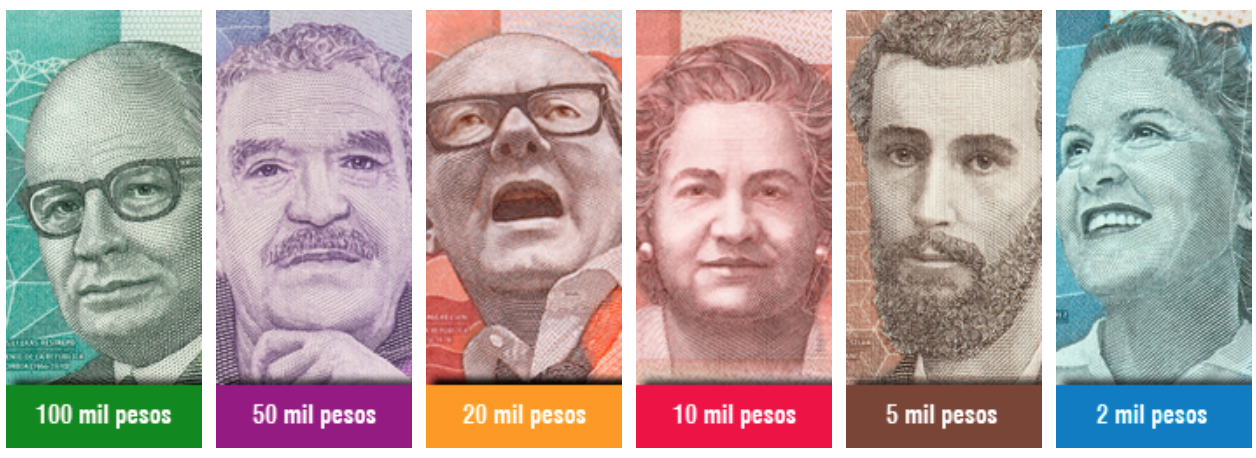
World through banknotes: Colombia
In 2006, Colombia's central bank issued a new series of banknote each celebrating a different national icon and decorated with national birds and plants. There are six denominations in the current Colombian peso series of banknotes: $1,000, $2,000, $5,000, $10,000, $20,000, and $100,000. The notes celebrate local presidents, artists, philanthropists, poets and authors in designs that express powerful romantic values of passion, boldness, hope and beauty.
'The academics, artists and revolutionaries depicted on the banknotes are not only significant figures in Colombia’s history. They also stand as role models and inspirations – both within the country and outside of it.'
2,000 peso banknote: Débora Arango (artist)
Artist Debora Arango along with the Caño Cristales (the river of five colours), the leaves and fruit of the 'arbol lechoso' (milky way tree) and an illustration of the bird from the play Las monjas y el cardenal (the nuns and the cardinal) appear on the deep blue 2,000 peso banknote (H66mm × W128mm).
The face of the new 2,000 peso bill – Débora Arango – was no stranger to controversy. A painter from Medellín, Arango explored the ever changing perception of the female body in Colombian society. Instead of sticking to the traditional style, and having rejected the socially acceptable and popular Cubism movement, she turned her talented hand to grittier subjects.
When, in 1913, 3,000 banana plantation workers went on strike and were subsequently massacred by the Colombian government, Arango used this to comment on the policies of the Colombian government during La Violencia – the resulting painting was named “Tren de Muerte” or “Train of Death”, and remains one of her most famous and powerful works.

'El tren de la muerte' (The Train of Death). Comment on the Masacre de las Bananeras by Debora Arango
She focused on women who had been ousted from conservative society. The subjects of her work were not members of the elite, but prostitutes and prisoners. These were labelled as obscene by the Catholic Church and led to her work being shunned throughout much of her professional life.
5,000 peso banknote: José Asunción Silva (poet)
Poet José Asunción Silva, the Colombian páramos, a puya plant and a bumblebee appear on the coffee brown 5,000 peso banknote (H66mm × W133mm).
José Asunción Silva (1865-1896) is Colombia’s most celebrated poet and one of the founders Latin American modernismo, a movement that transformed Hispanic literature.
"[Silva is] by nature and family sturdy and good-looking, but ghostly pale, of exquisite manners, great human and artistic sensibility, a lucid intelligence, a seductive verbal fluency, and an armoured dignity.”
The child of a wealthy Bogotá merchant, Silva suffered a number of personal and familial hardships, among them the loss of his beloved sister, Elvira. He took his own life at the age of thirty. Silva is also the author of a novel, De Sobremesa (For Dessert).
10,000 peso banknote: Virginia Gutiérrez (anthropologist)
The anthropologist Virginia Gutierrez, along with the Amazon region, the Royal Victory flower and the tree frog appear on the rose red 10,000 peso banknote (H66mm × W138mm).
The face of the new 10,000 peso note rose to fame by exposing the plight of single mothers in Colombia, the significance of the woman as the figurehead of the Colombian family, and how women could fight against the societal expectations that had been enforced by decades of religious colonialism.
Guitiérrez dedicated her life to the study of women’s place in Colombian society. In her research, she noted the ways that the different regions of Colombia perceived the value of women in monetary terms...The experience gave Guitiérrez the realisation that gender roles, even between geographically close regions, social strata, and generations, could be drastically different.
20,000 peso banknote: Alfonso López Michelsen (president)
President Alfonso López Michelsen along with the channels of La Mojana in the region where the zenú people settled, the fruit of the anon, the zenú earmuff and the vueltiao hat appear on the zesty orange 20,000 peso banknote (H66mm × W143mm).
Alfonso Lopez Michelsen, 94, whose Colombian presidency in the 1970s was marked by turbulence and who dedicated his final years to working for an agreement to free Colombia’s hostages. He left office with little popular support, having failed to improve the economy and being hounded by persistent accusations of corruption from his opponents.
Son of Alfonso Lopez Pumarejo (president of Colombia from 1934 to 1938 and 1942 to 1945), Lopez Michelsen abandoned his career as a lawyer to enter politics. As president from 1974 to 1978 while representing the dominant, centrist Liberal Party, he led Colombia through turbulent times, when a national strike gripped the country and rioting in Bogota left dozens dead.
Retired from politics, Lopez Michelsen analyzed Colombia’s political landscape in frequent columns for the Colombian newspaper El Tiempo and emerged as an unofficial mediator in Colombian conflicts.
In 1984, he met with drug lord Pablo Escobar in Panama in an unsuccessful attempt to broker an agreement that would see cocaine kingpins abandon their business. He was a firm advocate of a deal to swap all rebel-held hostages for imprisoned rebels, known as the “humanitarian agreement.” An estimated 3,000 Colombians are being held by various armed factions in the country.
50,000 peso banknote: Gabriel García Márquez (author)
Nobel in Literature author Gabriel García Márquez along with illustrations of The Lost City (core of the Tajron culture), the Sierra Nevada de Santa Marta, a hummingbird biting a flower and a bourgeois snail appear on the dusty violet 50,000 peso banknote (H66mm × W148mm). The banknote's kaleidoscope of butterflies is a reference to a leitmotif in García Márquez's 1967 opus, One Hundred Years of Solitude, the work for which he is best known.
When Gabriel García Márquez died in Mexico City in 2014, grief-stricken Colombians painted tribute murals of the beloved novelist on the streets. With the release of a new set of banknotes last month, Colombians now have a daily reminder of their Gabo (as García Márquez is affectionally called) in their wallets.
'A new and sweeping utopia of life, where no one will be able to decide for others how they die, where love will prove true and happiness be possible, and where the races condemned to one hundred years of solitude will have, at last and forever, a second opportunity on earth.'
García Márquez joins a group of illustrious authors memorialized in banknotes around the world. Among them are Hans Christian Andersen on the 10 Danish kroner (1952–1975); James Joyce on the Irish £10 (1993–1999), Charles Dickens on the UK £10 (1992–2003) and Japanese writer Ichiyō Higuchi on the ¥5,000 bill in circulation today.
100,000 peso banknote: Carlos Lleras Restrepo (president)
President Carlos Lleras Restrepo along with illustrations of The Cocora Valley in Quindío, with the wax palm (national tree), the ravine bird and the seven-year-old flower appear on the jungle green 100,000 peso banknote (H66mm × W153mm).
Carlos Alberto Lleras Restrepo is a Colombian politician and lawyer who served the 22nd President of Colombia from 1966 to 1970. He fostered economic union in Latin America as the driving force behind the Andean Pact, an agreement that forged trade links between Venezuela, Colombia, Peru, Bolivia, and Chile. Lleras Restrepo, a dyed-in-the-wool liberal, practiced law before gaining political prominence as head of the Liberal Party in 1941 and again from 1948 to 1950.
His second term as party president began after his predecessor, Jorge Gaitán, was assassinated, an event that touched off a decade of violent unrest between the Liberals and Conservatives in Colombia. After his home was burned to the ground, Lleras Restrepo spent two years in exile in Mexico. His bid for the presidency in 1978 was not supported by the party. Nonetheless, he remained active both in politics and as a journalist, writing for his magazine Nueva Frontera.


